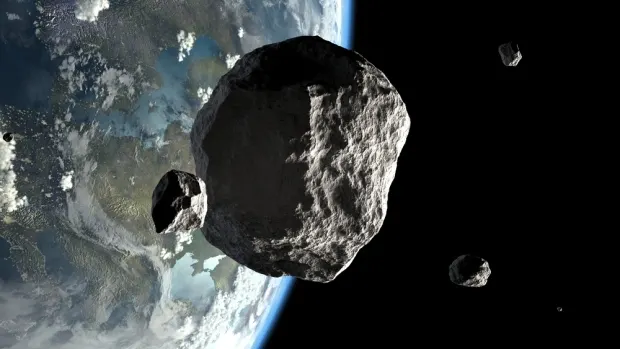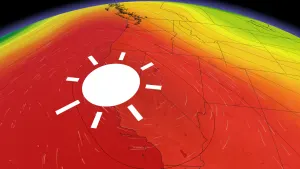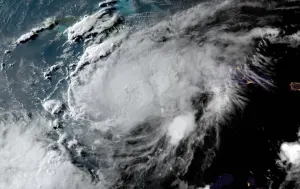
Asteroid twice the size of the Empire State Building flew past Earth on Saturday
Asteroid 2000 QW7 is estimated to be between 290 and 650 metres in diameter
An asteroid that flew by Earth Saturday evening has a sizable diameter that could even surpass some of the world's tallest buildings.
The rock, named 2000 QW7, is estimated to be between 290 and 650 metres in diameter, or between 951 and 2,132 feet, according to NASA. To put its size into perspective, the tallest building on the planet is the Burj Khalifa in Dubai, which sits at a height of 2,717 feet (828 metres). The next biggest structure is the 2,073-foot (632 metres) Shanghai Tower. The Empire State Building stretches 1,454 feet.
Rounding out the top five are the Makkah Royal Clock Tower at 1,972 feet (601 metres), Ping An Finance Center at 1,965 feet (599.1 metres) and Lotte World Tower Seoul at 1,819 feet (554.5 metres),
SEE ALSO: Astronomers spot the first-ever interstellar comet!
2000 QW7 zipped past Earth at a speed of 23,111 km/h, within a safe distance of 3,312,944 miles (5,331,666 kilometres) from Earth at 7:54 p.m. EST.
2010 C01 SAFELY WHIZZED BY FRIDAY
Saturday's rock was the second asteroid to fly by Earth in two days, as 2010 C01, estimated to be 400 to 850 feet (120 to 260 metres) in size, harmlessly passed the planet at 11:42 p.m. EST on Sept. 13.
The orbits of the two relatively medium-sized asteroids, 2010 C01 and 2000 QW7, are "very well known," according to Lindley Johnson, planetary defense officer and program executive for the Planetary Defense Coordination Office.
“Both of these asteroids [passed Earth] at about 14 lunar distances from the Earth, or about 3.5 million miles away, but small asteroids pass by Earth this close all the time," Johnson said in a Sept. 12 news release.
According to NASA, the number of discovered Near Earth Objects (NEOs) is now more than 20,000 -- with an average of 30 new discoveries added each week. More than 95 per cent of these objects were discovered by NASA-funded surveys since 1998, when the agency first launched its NEO Observations Program to track and catalogue them.










